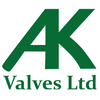Understanding ATEX Directive Requirements
The ATEX Directive, formally known as the ATEX 2014/34/EU, is a crucial piece of legislation within the European Union that governs equipment and protective systems intended for use in potentially explosive atmospheres. This directive is essential for ensuring safety in environments where flammable gases, vapours, or dust may be present. Compliance with the ATEX Directive is mandatory for manufacturers and suppliers of equipment used in such hazardous locations.
Under the ATEX Directive, equipment is classified into two categories: Category 1 for equipment that is intended for use in areas where explosive atmospheres are present continuously or for long periods, and Category 2 for equipment that is intended for use in areas where explosive atmospheres are likely to occur occasionally. Additionally, Category 3 encompasses equipment that is intended for use in areas where explosive atmospheres are not likely to occur in normal operation.
To comply with the ATEX Directive, manufacturers must ensure that their products undergo rigorous testing and certification processes. This includes risk assessments, design evaluations, and the implementation of appropriate safety measures. The equipment must be marked with the relevant ATEX symbols indicating its category and the type of explosive atmosphere for which it is suitable. For instance, equipment intended for use in gas atmospheres is marked with the letter 'G', while equipment for dust atmospheres is marked with the letter 'D'.
Furthermore, the ATEX Directive outlines specific requirements for documentation and labeling. Manufacturers are required to provide a Declaration of Conformity, which certifies that the equipment meets all applicable safety standards. Additionally, technical documentation must be maintained to demonstrate compliance, including design specifications, test results, and risk assessments.
It is important to note that the ATEX Directive applies not only to manufacturers but also to distributors and importers of equipment. All parties involved in the supply chain must ensure that the products they handle comply with the directive's requirements. Failure to comply can result in significant legal and financial repercussions, including fines and product recalls.
In summary, the ATEX Directive is a vital regulation that ensures the safety of equipment used in potentially explosive atmospheres. Compliance with its requirements is essential for manufacturers, distributors, and importers to protect both personnel and property from the risks associated with explosive environments. Understanding and adhering to the ATEX Directive is not only a legal obligation but also a critical component of responsible business practices in industries where safety is paramount.

